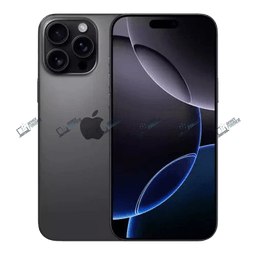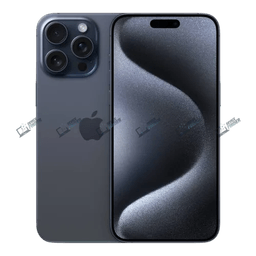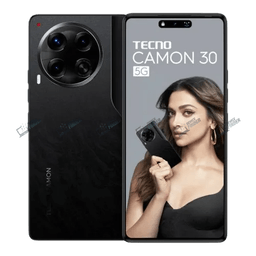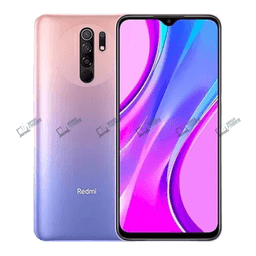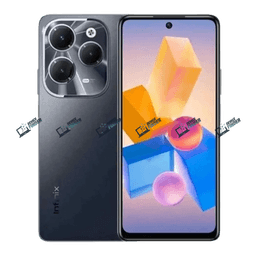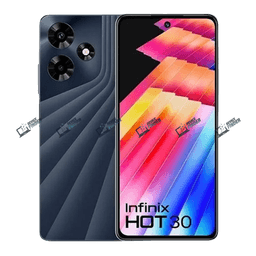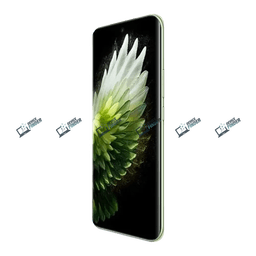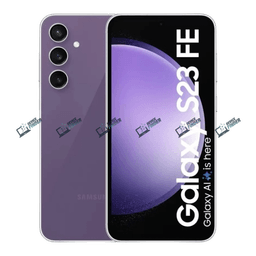The mobile display technology is crucial to the overall smartphone experience. It impacts everything from battery life to visual quality. Your screen's brightness, clarity, and efficiency are determined by the type of display. New display technologies like LCD, OLED and AMOLED are pushing the limits of visual quality as smartphones continue to evolve. Understanding display options is important for Bangladesh consumers, who are price sensitive and want to balance affordability with the latest features. These diverse technologies are incorporated into popular smartphones such as the Samsung Galaxy A and Xiaomi Redmi Note Series, which offer something for everyone.
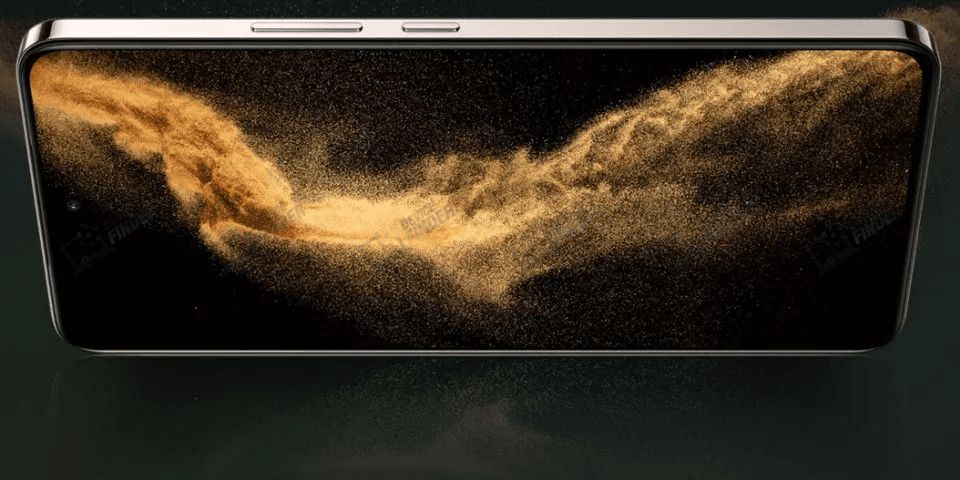
Mobile Display Technologies A Complete Guide to Smartphone Screens
Major Display Types in the SmartPhone World
Today's smartphones feature a variety of display technologies that each offer unique advantages.
-
LCD Display (Liquid Crystal Display): LCDs are common and inexpensive, and offer good color accuracy and brightness. These are commonly found on budget smartphones, such as the Infinix Note Series.
-
OLED Display (Organic Light-Emitting Diode): OLED screens are known for their deep blacks, vibrant colors and power efficiency. They're widely used on mid-range smartphones like Samsung Galaxy A Series.
-
AMOLED Display (Active Matrix OLED): AMOLED is a step above OLED and offers better contrast. Samsung Galaxy S phones feature it.
-
Super AMOLED Display: It is an enhanced version of the AMOLED that offers improved brightness and efficiency. This is found in Samsung Galaxy S23 devices.
-
LTPO (Low Temperature Polycrystalline Oxide): It's allows dynamic refresh rates and improves battery life. This material is used on high-end smartphones like the iPhone 13 Pro.
Resolution is the density of pixels (e.g. Full HD, 4K), refresh rates and sample rate affect the responsiveness and smoothness of the display. Scrolling is smoother with higher refresh rates like 120Hz. Touch sampling rates are better for gaming.
LCD (Liquid Crystal Display)
The LCD technology is widely used in smartphone displays, particularly in mid-range and budget devices. The liquid crystals in the display are illuminated by a backlight. Liquid crystals don't actually emit light, but they alter the way backlight is passed through them in order to create images. The result is decent sharpness and color, but contrast levels don't look as intense as AMOLED and OLED displays. Blacks also tend to appear more gray than black.
They are also more affordable than OLED screens, making them an excellent choice for smartphones on a budget. The LCD screens are also good for outdoor use and do not suffer from the burn-in problems that can affect OLED displays. The downside of these screens is that they consume more power than OLED and AMOLED displays, since the pixels are lit by their backlight, even when in dark environments.
Smartphones in Bangladesh like the Xiaomi Redmi 11 or Infinix 12 have LCD screens, which offer a good visual experience for a reasonable price. Although LCD displays don't offer the deep blacks and vibrant colors of AMOLED screens, they can be a good option for everyday use, including watching videos, surfing, or gaming.
OLED (Organic Light Emitting Diode)
Displays using OLED (Organic Light Emitting Diode), represent an important upgrade to LCD screens. OLED displays are made up of pixels that emit light whenever an electric current passes through them. OLED screens can achieve deep blacks, as pixels are completely turned off when black images appear. This is a feature that LCD displays cannot match. OLED screens are popular because they produce more vivid colors and deeper blacks.
OLED screens are more energy efficient than LCDs because they do not require a backlight. It is especially beneficial to battery life in phones with high-resolution, large OLED displays like the Samsung Galaxy A53 and OnePlus 9 Pro. OLED screens can burn in, leaving permanent marks. It is a problem when static elements are displayed for long periods of time.
You'll see OLED screens in Bangladesh on smartphones such as the Samsung Galaxy M32 or Xiaomi Mi 11. These phones are aimed at users who want to enjoy premium visuals without spending a fortune. OLED offers a great balance between color vibrance, performance, and power efficiency.
AMOLED (Active Matrix OLED)
AMOLED displays (Active Matrix OLED), a refinement of OLED, feature an active matrix which controls each individual pixel. The result is a faster response time, improved color reproduction and better contrast when compared with standard OLED displays. Many flagship smartphones now feature AMOLED displays due to the superiority of their performance, including brightness, response speed, and energy efficiency.
The ability of AMOLED screens to display rich, vibrant colors and maintain true blacks is one of their key advantages. This comes from the independent control of each pixel. AMOLED displays are ideal for watching videos in high definition and playing graphics-intensive games. The AMOLED screens on smartphones like the Samsung Galaxy S23 or OnePlus 10 Pro offer a smooth user experience and great viewing angles. AMOLED screens are also more vibrant in color than LCD or regular OLED displays.
Super AMOLED
Super AMOLED, a version of the AMOLED developed by Samsung offers improved brightness, color saturation and energy efficiency. Super AMOLED screens are thinner, lighter and responsive because the touch layer has been integrated into the screen. The overall performance is improved, especially in terms of clarity and touch sensitivity in bright environments.
The Super AMOLED screen provides vivid colors with high contrast ratios and deep blacks. They are also more energy-efficient and use less power because they do not require a touch layer. Both the Samsung Galaxy S23 ultra as well as the Samsung Galaxy Z fold4 have Super AMOLED screens, which provide excellent color accuracy.
Super AMOLED screens are available in Bangladesh on mid-range to high-end smartphones, such as the Samsung Galaxy A54 or Samsung Galaxy S21 FE. These displays offer a great balance between affordability and performance. Super AMOLED is a great option for people who want a high-end visual experience, but don't have the budget to buy flagship smartphones.
LTPO (Low-Temperature Polycrystalline Oxide)
LTPO is a low-temperature polycrystalline oxide display that offers dynamic refresh rates. The screen's refresh rate can be adjusted based on what the user wants to do. The display will reduce its refresh rate if static images, like text, are displayed. It helps to extend battery life in phones with displays that have a high refresh rate.
LTPO screens are used in the latest high-end phones, allowing refresh rates ranging between 1Hz for static content and 120Hz or more (for video or gaming). The result is a smoother performance with excellent battery optimization. This makes it ideal for high-end devices such as the iPhone 14 Pro or Samsung Galaxy S22 ultra.
LTPO is gaining popularity in Bangladesh. This technology, which allows for a smooth experience, without sacrificing the battery, has become increasingly common. Devices such as the iPhone 13 Pro Max or Samsung Galaxy Z fold4 offer a good balance between power and performance.
Smartphone Display Specs and Ideal Uses Explained
In evaluating a smartphone's display, key specs play an important role in determining its quality and usability. They include the following: Resolution, Refresh rate, Touch Sampling, Brightness, and HDR support. Each of these affects different visual aspects.
-
Resolution: The number of pixels displayed on a screen is often expressed in FullHD (1920x1080), quad HD (2560x1440), or 4K (3840x2160). Higher resolutions result in clearer, crisper images. This is ideal for video streaming or gaming. High-resolution models such as the Samsung Galaxy S23 or iPhone 14 offer a crisp viewing experience.
-
Refresh rate: Measuring in Hertz (Hertz), the refresh rate is how many times the screen updates per second. Higher refresh rates (90Hz or 120Hz for example) make scrolling and animated graphics smoother. This is particularly beneficial to gaming and multimedia. Most budget models stick to 60Hz. However, mid-range and flagship devices such as the OnePlus 9 Pro or Xiaomi Mi11 offer 120Hz.
-
Touch Sample Rate: Measures how fast the screen reacts to inputs. Higher rates (e.g. 240Hz or 360Hz) provide faster interactions. The ASUS ROG Phone 5s Pro, is a great device for gamers, with its ultra-high sampling rate.
-
Brightness: The brightness of the display is measured in Nits. Displays with higher brightness (e.g. 1000 nits), are more visible in direct sunlight. This is helpful for outdoor usage. The iPhone 13 Pro delivers over 1000 nits for an outstanding outdoor viewing experience.
-
HDR support: High Dynamic range (HDR), which allows more vivid colors and contrast to be displayed, enhances visuals when viewing HDR content. HDR10+ is the standard, and premium devices such as the Samsung Galaxy S22 ultra or OnePlus 10 Pro support these features to provide rich multi-media experiences.
How Display Affects Smartphone Price in Bangladesh
The cost of manufacturing high-quality displays such as AMOLED or OLED is passed onto the customer. These premium displays like Super AMOLED and LTPO are often used in flagship devices such as the Samsung Galaxy S23. They offer superior color accuracy and deeper blacks. These smartphones cost more because they provide a better user experience.
Budget smartphones, on the other hand use LED screens, which can be produced more economically. The Xiaomi Redmi 11 or Infinix note 12 are good phones for daily use, but they lack OLED's advanced features. These models are therefore more affordable and appeal to Bangladeshi consumers who care about price.
Best Smartphone Displays in 2025 (Bangladesh Market)
Best smartphone displays in Bangladesh combine high-resolution, rapid refresh rates and vivid color accuracy.
-
Samsung Galaxy S23 Ultra: The Samsung Galaxy S23 Ultra features a 6.8" Dynamic AMOLED display that has a resolution 3088 x1440 with a 120Hz refresh rate. It offers an excellent visual experience. It supports HDR10+ and provides rich colors that are ideal for gaming or media consumption.
-
Apple iPhone 15 Pro Max: This iPhone 15 Pro Max features a 6.7" Super Retina XDR display with ProMotion, which offers a 120Hz update rate to ensure a smooth performance. Dolby vision and HDR10 ensure vivid colors. The 2000 nits peak brightness makes this one of the brightest screens on the market.
-
OnePlus 11 Pro: Known as a flagship contender for its 6.7" Fluid AMOLED screen, it features a 1440 x 3216 resolution, 120Hz refresh rate, HDR10+ and provides exceptional clarity and vibrance.
-
Xiaomi 13 Pro: The Xiaomi 13 Pro is equipped with a 6.73" AMOLED screen that offers a 3200x1440 resolution, 120Hz refresh rate and Dolby vision and HDR10+. This is the perfect display for those who want high-quality screens at an affordable price.
Mobile Display Availability and After-Sales Support Policy in Bangladesh
These authorized service centers provide customers with genuine parts and displays for popular brands such as Samsung, Apple, Xiaomi and Realme. They also ensure that the customer receives high-quality repair services. The authorized service centers offer the most reliable and comprehensive services. They also maintain warranty coverage.
Most manufacturers offer warranty support, and this typically covers display issues under specific conditions. Samsung or Apple have warranty plans that include coverage for display problems and dead pixels in the first year. Accidental damage such as cracks and burns is not usually covered unless the owner opts for a warranty extension or an insurance policy.
The quality of the repairs can vary in unofficial shops. These are usually more affordable and offer a better value. They may be using non-original components, which could affect display quality and performance. It's still recommended that you use an authorized service center for the best results. This is especially true for expensive displays such as AMOLED and Super AMOLED.
What Display Should you Choose?
The right mobile display depends on the needs, budget, and preferences of each individual. You may be a tech-lover or someone who enjoys watching high-quality videos. A SuperAMOLED and AMOLED screen, like those in the Samsung Galaxy S23 and iPhone 15 Pro Max will provide vibrant colors, rich blacks, smooth performance, with high refresh rate. They are ideal for immersive media experiences, gaming and content consumption.
AMOLED or OLED displays on mid-range smartphones like the Xiaomi 13 PRO, OnePlus 11R provide a good balance between performance and price. These displays are still vibrant, have good contrast and have high resolution. They're perfect for everyday use.
FAQs
1. What's the difference between AMOLEDs and OLED displays?
Answer: Active Matrix OLED is an improved version of OLED that offers faster response time and greater contrast. AMOLED is a superior technology in that it uses an active matrix to produce light. This allows for greater brightness and energy efficiency. High-end phones like the Samsung Galaxy S23 use AMOLED.
2. What's the best refresh rate on a mobile screen?
Answer: A 90Hz or 120Hz rate of refreshment will allow for smooth scrolling, gaming and other activities. The higher refresh rate provides better responsiveness to touch, so devices like the OnePlus 11 and iPhone 14 Pro with 120Hz display are perfect for gamers who want smoother interactions.
3. What are the benefits of HDR on a mobile screen?
Answer: HDR enhances color and contrast accuracy for a vibrant, realistic experience. Displays that support Dolby vision and HDR10+ , such as those found in the iPhone 15 Pro Max deliver enhanced color depth.
4. Can I play games on a phone that has an LCD screen?
Answer: LCD screens can be used to play games, but they might not have the vibrant colors and deep blacks of OLED or an AMOLED display. Even budget phones that have LCD displays, like the Xiaomi Redmi 11 provide an excellent gaming experience.
5. What is the effect of nits on mobile display visibility in direct sunlight?
Answer: Nits are a measure of brightness, with higher numbers providing better visibility under bright conditions. The iPhone 13 Pro and other smartphones with 1,000 nits are very visible in direct sunlight.
